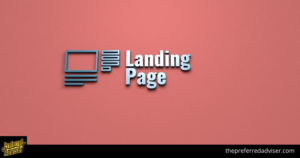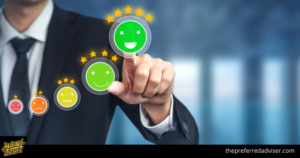If you want to boost your conversion rates, you should use a landing page. Landing pages are a powerful tool for online marketing and e-commerce, and they offer marketers a chance to engage potential customers directly.
Approximately half of all successful online marketers use landing pages that are optimized to convert visitors into leads or sales. Landing pages are efficient in converting visitors because of their design.
The only choices a person has when they reach a landing page is whether to follow the call to action or leave the page.
To better understand PPC landing pages, take some time to read and familiarize yourself with them.
Landing Page
 A landing page is a web page that is separate from your main website and designed for a single objective.
A landing page is a web page that is separate from your main website and designed for a single objective.
Other features of your web application may include robust navigation, links to more content, resources, frequently asked questions, blog feeds, news and events, social CTAs, etc.
A landing page is designed to have a singular focus in order to conversions. Everything on the page should support this goal and not be a distraction.
Your landing page should be focused on a single product, service, or offering. Having a page that is too cluttered or contains too much information can be overwhelming for potential customers and cause them to leave the page without taking any action.
Elements of a Landing Page
1. A Unique Selling Proposition
The biggest challenge is to keep the visitor’s attention on your landing page from the moment they click through until they decide to take action or leave.
The USP on your landing page is the key factor in whether or not you get a conversion.
A USP has four main elements:
- A headline
- A description
- A list of benefits
- A closing argument
The headline is the most important part of the text. It’s what the visitor sees first, so it will likely determine whether they read on or leave the page.
Your headline should be catchy, informative, and enticing enough to make visitors want to learn more. This tool can help you create a compelling headline to grab the attention of prospective customers.
The next section The next section of the text describes the features of the product in more detail.
If your headline is “The Most Powerful Weight Loss Formula You’ve Ever Seen,” a good supporting headline would be “Here is the weight loss industry’s best-kept secret, a weight loss formula that works for everyone!”
A headline should be followed by a description that explains it in more detail using simple and straightforward language. The description should be attractive and provoking enough to inspire further reading.
2. Intriguing Copy
The quality of the content on a landing page is crucial to its effectiveness. People surfing the internet are looking for something that is both informative and enjoyable.
Businesses need copy that can turn leads into conversions. This is achieved when the text is able to do all of this in one go.
A good landing page keeps the visitor engaged from beginning to end. It persuades them to follow the call to action by emphasizing how they will benefit from it.
It also answers their questions and addresses their concerns.
3. Enticing Visuals
 The most efficient way to communicate is through visual media. They say that a picture is worth a thousand words, and since conciseness is necessary for any good landing page, alluring visuals are key for finalizing the sale.
The most efficient way to communicate is through visual media. They say that a picture is worth a thousand words, and since conciseness is necessary for any good landing page, alluring visuals are key for finalizing the sale.
The terms “money shot” and “hero shot” in relation to online marketing refer to images or videos that are designed to grab the attention of prospective customers.
Some products cannot be summarized in a few words, so videos and pictures can be used as powerful tools.
A successful landing page uses minimal words to describe the benefits and instead relies on visual representations of the product to convey the message.
4. Perks
The most important thing a landing page has to do is convince people to buy your product rather than a competitor’s. It needs to answer why someone should provide their information, register for an account, or visit your website.
Every landing page should tell the visitor how they will benefit from completing the desired action. Questions from prospective customers should be answered simply and convincingly.
-Bullet point lists are excellent for this task -They are easy to scan, quick to read through, and often have a more attention-grabbing format than prose.
5. Social Proof
A successful landing page must have customer testimonials to show new visitors that the brand can be trusted.
The internet can be a tricky place because you never really know who you’re dealing with or what their motives are. So it’s always a good idea to be cautious when spending money online and make sure you’re not getting scammed.
The two types of social proof required in a landing page are:
- People who have subscribed to or purchased from a brand, and benefited from it, will not hesitate to wax poetic about how it has changed their lives. These testimonials are powerful influencers, especially when they come from an authoritative voice, such as an industry leader or a famous personality.
- Reviews are the bread and butter of online shopping. Not one customer is willing to spend a dime on a product or service that has yet to prove itself as legitimate. What is the quickest way to verify legitimacy? Seeking advice from others. Reviews are honest, which means everything to a prospective customer who wants an unbiased perspective of what your product or service can do for them.
6. Call to Action
A call to action is an instruction to the reader on what they should do next. This could be attending a webinar, submitting information, purchasing something or subscribing to a service.
The answer to this question depends on what the business wants to achieve with their landing page.
The most important part of a call to action is that it is easy to understand. This is because it is what turns visitors into leads or customers. A call to action can appear in many different forms.
Types of Landing Pages
Lead-Generation Landing Pages
The purpose of landing pages is to collect user data, which is then referred to as leads.
The main goal of these pages is to get visitors to willingly give out personal information like their names, phone numbers, and email addresses.
This information is used by businesses to create a list of email addresses to which they can send follow-up messages with offers and deals that might be of interest to the recipient.
Coming Soon Pages
 A future product can be advertised on a landing page. This particular landing page doesn’t have a conversion goal.
A future product can be advertised on a landing page. This particular landing page doesn’t have a conversion goal.
The website exists for the purpose of informing visitors about an upcoming product launch.
Information Pages
Informative landing pages provide information to customers, fans, supporters, and stakeholders without promoting a specific conversion goal or product/service.
Product Purchase Landing Pages
A landing page that is promoting a product or service must contain all of the aforementioned elements.
A product landing page should describe the product, show its benefits, provide social proof that it is good, and end with a call to action.
Including the price of the product on your landing page will make it more effective in converting potential buyers.
Click-Through Landing Pages
Theclick-through landing page’s primary purpose is to send the user to another web page. The next page might be your site’s home page, a product information page, or a sign-up page.
The goal of this call to action is to get potential customers interested in what the company has to offer so that they will continue further down the sales funnel.
Thank You Landing Page
Thank you pages are a great way to show your appreciation to your customers. They can be placed after the checkout page or after a sign-up form is submitted.
Building a Narrative: Landing Pages in PPC Campaign Context
A landing page should not be used as a “catch all” for traffic. It is a tool that should be used as part of a marketing plan.
The landing page is a specific page that is part of a larger story or campaign.
The term “narrative” is important here because the pay-per-click campaign is like a story you create for your target prospects.
Your campaign needs to make sense. If you don’t do a good job of connecting the dots, you risk losing your users, the same way a movie loses an audience when the plotline becomes difficult to follow.
- The user searches for “carpet cleaning services” and sees an ad in the search results that speaks directly to that specific service with a very clear call to action
- Clicking on the ad brings the user to a landing page that specifically mentions “carpet cleaning services” and includes a conversion point that also maintains an offer specifically tailored to “carpet cleaning services”
- Upon conversion, the confirmation page reassures the user with additional references to “carpet cleaning”
- Finally, the user receives an automated follow-up email the further cements the idea that “carpet cleaning” is a specialty – this completes the cohesive narrative.
Segmenting Your Landing Pages
Although it would be a better idea to discuss the development of key phrase groups in another article, it’s important to mention that landing pages should be created specifically for key phrase and ad groups.
If you try to send traffic from multiple keyword groups to one landing page, it will spread out the relevance, leading to a lower click-through rate and fewer conversions.
Although it may take more time, it is worth it to create separate landing pages for each ad group in order to maintain a consistent story.
Segmentation isn’t just about key phrases and ad groups, you can also segment according to a vast myriad of criteria. A few examples:
Segment by Demographic
 If you search for “carpet cleaning services,” you’ll get a lot of different results, depending on the advertisement.
If you search for “carpet cleaning services,” you’ll get a lot of different results, depending on the advertisement.
We can assume that you have an ad that offers a special promotion for homes over 2,000 square feet and a second ad that offers 15% to new users.
Each ad should lead to a separate landing page that is relevant to the ad. This way, you can ensure that each ad is targeting the appropriate audience.
Segment by the User’s Phase in the Buying Cycle
Your ad copy can be tailored to speak to users at different stages of the buying cycle.
You might be advertising to users who have never tried your service before as well as those who have tried it before but didn’t continue using it.
In both cases, it would be important to create segmented landing pages that focus on the specific offer.
Segment by Specific Offering
Your landing page should list targeted offerings to reflect what your potential customer is looking for.
It’s important to make sure that your landing page reflects the pricing that was advertised in the ad copy, because if it doesn’t, users might not trust you.
Landing Page Best Practices
Responsive Design
Your PPC campaign might be more successful if your landing pages are optimized for mobile devices.
Responsive pages adjust their size and distribution depending on which browser or device a user is viewing the page with. If you’re targeting mobile users, using a responsive landing page means you don’t need a separate page for mobile browsing.
Quality Score
 Your landing page’s relevancy to your ad copy and target search term will affect your rank and how much you spend per click.
Your landing page’s relevancy to your ad copy and target search term will affect your rank and how much you spend per click.
Your quality score is a calculation that Google uses to determine your relevance to the key phrase you’re bidding on. It is impacted by how well your page copy, title, and URL coincide with your target key phrase and ad copy.
If you want your ad campaigns to be successful, it is important to segment your landing pages by ad group.
A/B Testing
To optimize your landing page, you need to keep testing it.
You can use your landing pages to test different aspects of your ads, such as the wording of the ad, what is being offered, the price, the media, the size of the form, etc.
Final Takeaway
This article provides tips to create an effective PPC campaign with the goal of converting leads. For a successful campaign in the long term, it is important to keep the same message consistent.
If you want your customers to keep coming back and trusting your products, keep your product information and calls to action consistent. This will also help you increase your conversion rates.

0 comments